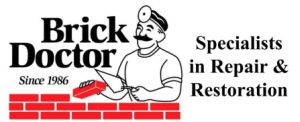Personal Safety and Fireplaces
While most quality masonry work is virtually maintenance-free, wood-burning fireplaces are an important exception. Neglected fireplaces not only can lead to expensive repairs, but also cause a substantial number of deaths and injuries every year from chimney fires, failed chimney components, and carbon monoxide poisoning.
Chimney fires are caused by a build-up of creosote (a residue from the smoke) which can form on the interior walls and flue lining. If sparks ignite this substance, such fires generate extremely high temperatures, often resulting in undetected damage to the chimney.
- Tip: To help limit creosote emissions, avoid burning trash in your fireplace, and use only dry, seasoned firewood.
Failure of the chimney components can result from lightning or severe weathering from the outside—or from chimney fires within, as discussed above. Extreme temperatures and/or water infiltration can cause premature cracking and deterioration of brick, mortar joints, and flue tiles (see more details at Fireplaces & Chimneys). Once this damage has occurred, a second chimney fire is likely, and would be significantly more dangerous, since flames may now escape the chimney through the open gaps, igniting nearby combustibles in the walls or attic.
Carbon monoxide is a poisonous by-product of combustion (fires), yet is odorless and invisible. Therefore, it’s all-important that the damper door is always open during a fire, even with clean-burning gas logs, to allow these gasses to escape. Any gaps in chimney flues or mortar joints may also allow these gasses to escape undetected into attic spaces or upstairs rooms. Exposure to even small amounts of carbon monoxide can cause flu-like symptoms, headaches, nausea, fatigue, and dizziness; or in larger amounts, brain damage or even death within minutes.
Fortunately, these problems are almost entirely preventable by having your chimney cleaned and inspected every year by a certified chimney sweep. However, if your sweep uncovers a masonry-related problem, you’ll need a masonry expert to insure a safe, enduring repair.
- Tip: For gas log installations, some experts suggest installing a C-clamp or similar device on the damper door to prevent it from completely closing. This insures carbon monoxide gasses are still vented in case you forget to open the damper during use. Carbon monoxide detectors are also readily available to warn building occupants of dangerous CO levels.
Want to know more? Just ask us, we’re here to help you. Contact us.
